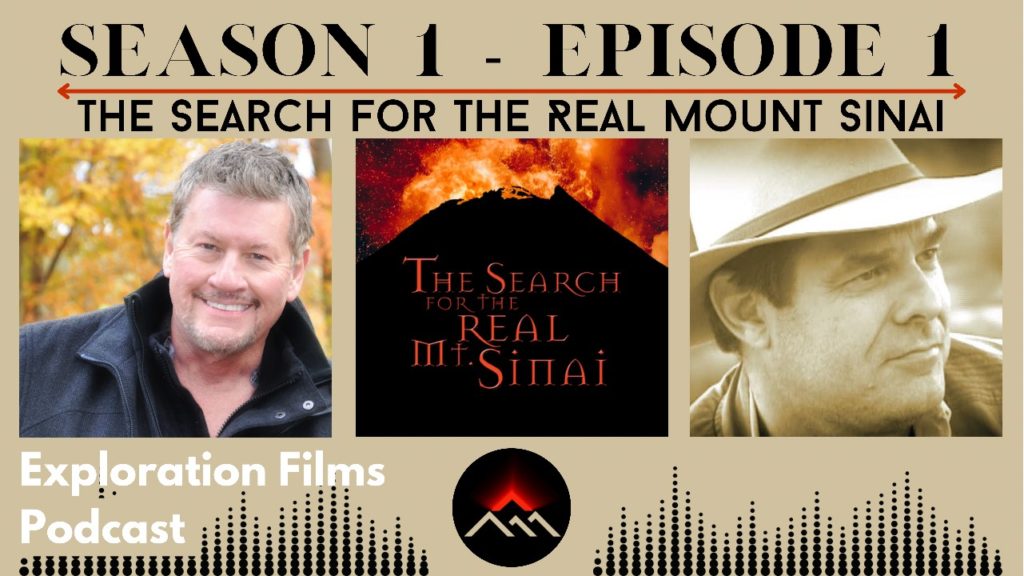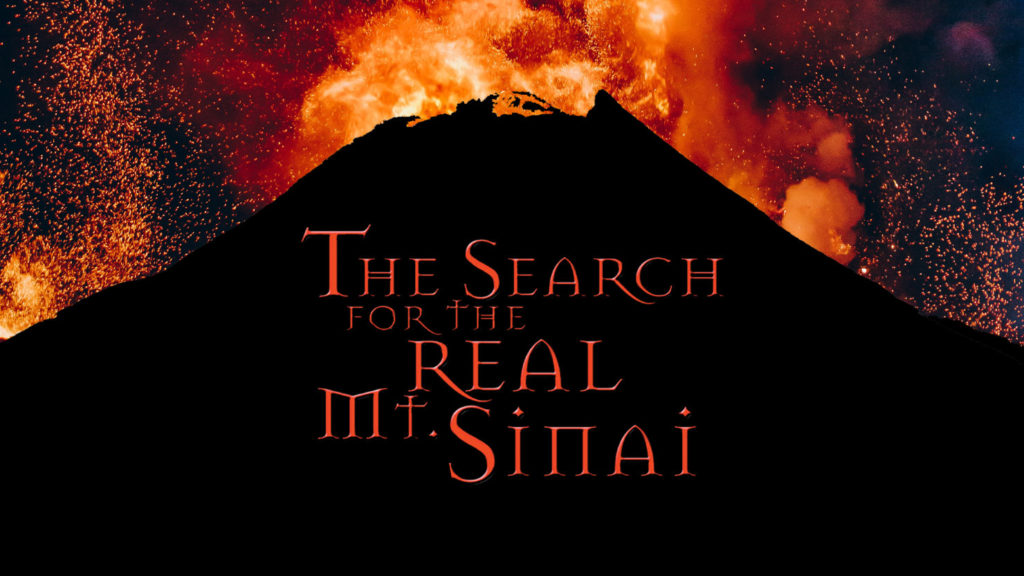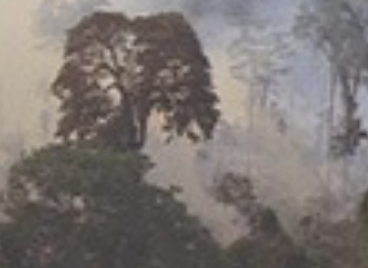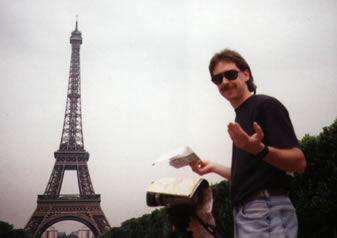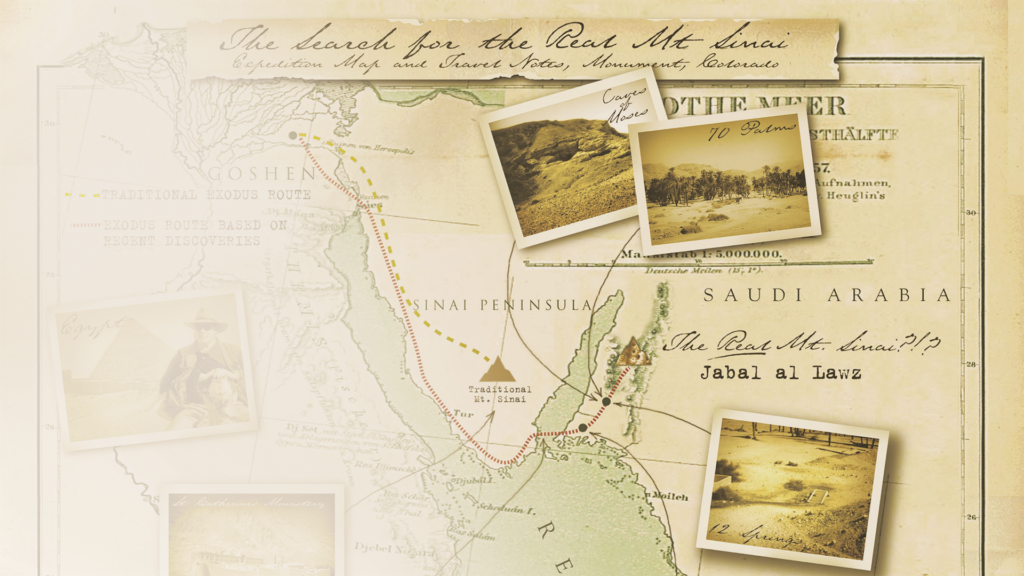
For centuries now, Bible scholars have been puzzled as to where the real Mount Sinai is located. Most people are unaware of the fact that not one shred of evidence has been discovered to prove that what is called “Mount Sinai” in the Sinai Peninsula is indeed the famed mountain of Exodus. Several proposed sites for the real Mount Sinai have been suggested by biblical scholars, but there is no archaeological evidence to support any of the claims. In fact, the only reason at all that a mountain in the Sinai Peninsula is called “Mount Sinai” is because around 500 A.D., a fortuneteller guessed this to be its location. Tradition is the only evidence that exists.
It’s important to use the entire Bible as a guide for the search. Galatians 4:25a explains, “Now Hagar stands for Mount Sinai in Arabia.” Paul is clearly saying that Mount Sinai is in Arabia, which has always been east and south of Palestine, the area of present-day Saudi Arabia. Exodus 3:1 states that Mount Sinai is in the ancient land of Midian: “Now Moses was tending the flock of Jethro his father-in-law, the priest of Midian, and he led the flock to the far side of the desert and came to Horeb, the mountain of God.” There are two important issues here. First, Midian is in present-day Saudi Arabia. Second, at the traditional site of Mount Sinai, there is no evidence of the back side of a desert; it is surrounded by rocky, mountainous peaks. By contrast, Mount Jabal al Lawz, located in Midian, is on the far side of a vast desert. Moses fled Egypt after killing an Egyptian. Exodus 2:15a says, “When Pharaoh heard of this, he tried to kill Moses, but Moses fled from Pharaoh and went to live in Midian.” Egypt was not a safe place for Moses to hide. He would not have fled to the Sinai Peninsula, where Pharaoh had turquoise and copper mines which were protected by a strong military presence. Moses fled to Midian, east of the Gulf of Aqaba. The Bible says that he went out of Egypt, and makes several references to Moses returning to Egypt from the land of Midian. As Exodus 4:19 tells us, “Now the Lord had said to Moses in Midian, ‘Go back to Egypt, for all the men who wanted to kill you are dead.'” All of these passages clearly point to present-day Saudi Arabia as the area to which Moses fled and subsequently met God at the burning bush. Bible references and archaeological evidence were combined to suggest an interesting new theory regarding the Exodus and the location of the real Mount Sinai. However, a site inspection was necessary to determine if other evidence could be found to support it. Saudi Arabia’s closed borders made it impossible for a team of scholars and archaeologists to enter the country. As a result, two men, Bob Cornuke and Larry Williams, surreptitiously slipped into the country, traced what appears to be the Exodus route, and climbed the mountain which many scholars now consider to be the real Mount Sinai.
Here is a brief account of their adventure, their findings and how these relate directly to the Bible.
RED SEA CROSSING SITE
The Bible says in 1 Kings 9:26, “King Solomon also built ships at Ezion Geber, which is near Elath in Edom, on the shore of the Red Sea.” This verse gives us some interesting clues. Solomon had his port at Elath, on the Gulf of Aqaba. The NIV Study Bible references this verse as follows: “Red Sea. The Hebrew for this term, normally read as Yam Suph (‘sea of reeds’), refers to the body of water through which the Israelites passed at the time of the Exodus. It can also be read, however, as Yam Soph (‘sea of land’s end’), a more likely reading when referring to the Red Sea, and especially… to its eastern arm, the Gulf of Aqaba.” This could mean that the “sea of land’s end,” at the tip of the Sinai Peninsula, was the site of the Israelites’ crossing.
THE 70 PALMS AND 12 SPRINGS OF ELIM
Cornuke and Williams then traveled toward Mount Jabal al Lawz and came to several clear water springs. The area also had a grove of palm trees. Exodus 15:27 states, “Then they came to Elim, where there were twelve springs and seventy palm trees, and they camped there near the water.”
BITTER LAKES
If the Israelites had crossed in the Sea of Reeds area, as some suggest, it would have to be in the Bitter Lakes region, north of the Gulf of Suez. This is not consistent with what Exodus 15:10 records about how Pharaoh’s soldiers died: “But You blew with your breath, and the sea covered them. They sank like lead in the mighty waters.” The Bitter Lakes is a marsh with no mighty waters. At the tip of the Sinai Peninsula, however, there are ocean depths that go down 2,000 feet or more.
TRADITIONAL MOUNT SINAI
Bob Cornuke visited the traditional Mount Sinai, located in a rocky, mountainous region of the Sinai Peninsula. The only area where the Israelites could have possibly camped was a small, flat valley area adjacent to the mountain, allowing for only 1 square yard per person (assuming that over 2 million people were involved in the Exodus). Despite extensive archaeological research throughout the region, nothing shows evidence of any large civilization ever occupying this area.
UNDERWATER LAND BRIDGE
Cornuke then traveled to the tip of the Sinai Peninsula and explored under the waters of the Gulf of Aqaba. A land bridge was discovered just below the surface of the water. This unusual underwater formation was possibly walked upon by the Israelites as they crossed through the parted waters of the Red Sea.
BITTER SPRINGS OF MARAH
Bob Cornuke and Larry Williams traveled to the area across from the tip of the Sinai Peninsula, using the Bible as a map to help find evidence of the Exodus route. They traveled inland 30 kilometers to a group of springs. Exodus 15:22-23a says: “Then Moses led Israel from the Red Sea and they went into the Desert of Shur. For three days they traveled in the desert without finding water. When they came to Marah, they could not drink its water because it was bitter.”
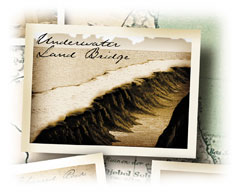
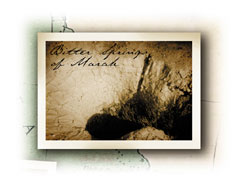
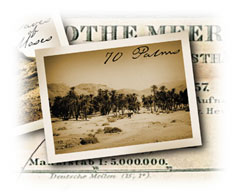
BITTER SPRINGS OF MARAH
Bob Cornuke and Larry Williams traveled to the area across from the tip of the Sinai Peninsula, using the Bible as a map to help find evidence of the Exodus route. They traveled inland 30 kilometers to a group of springs. Exodus 15:22-23a says: “Then Moses led Israel from the Red Sea and they went into the Desert of Shur. For three days they traveled in the desert without finding water. When they came to Marah, they could not drink its water because it was bitter.”
THE 70 PALMS AND 12 SPRINGS OF ELIM
Cornuke and Williams then traveled toward Mount Jabal al Lawz and came to several clear water springs. The area also had a grove of palm trees. Exodus 15:27 states, “Then they came to Elim, where there were twelve springs and seventy palm trees, and they camped there near the water.”
CAVES OF MOSES
While at the springs, Cornuke and Williams found some caves being excavated by Saudi archaeologists. A worker at the site said writings found in the caves indicated that the prophet Musa (Moses) had come through this area with his nation of people.
CHARRED PEAK AND MELTED ROCK
Continuing to Mount Jabal al Lawz, the men found the top of the mountain to be black, as if the rocks had been burned. When broken open, the melted rocks revealed non-volcanic granite inside. Exodus 19:18a says, “Mount Sinai was covered with smoke, because the Lord descended on it in fire. The smoke billowed up from it like smoke from a furnace.”
BOUNDARY MARKERS
Further investigation found large piles of rocks in a semicircle around the front of the mountain, spaced about every 400 yards. Measuring about 5 feet tall and 20 feet across, these piles could be the boundary markers placed by Moses, as mentioned in Exodus 19:23b: “Put limits around the mountain and set it apart as holy.”
GOLDEN CALF ALTAR
In the flat area at the base of the mountain, Cornuke and Williams found large boulders which had been placed together, creating a formation 30 feet across and 30 feet tall, which could be the altar where the golden calf was constructed. On the rocks were etched ancient drawings of a bull god as described in Exodus 32:4a: Aaron “took what they handed him and made…an idol cast in the shape of a calf.”
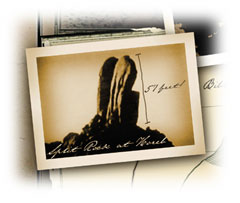
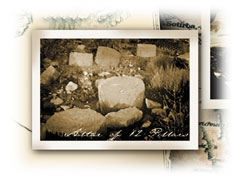
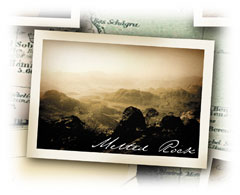
ALTAR OF 12 PILLARS
At the foot of the mountain, they found a V-shaped altar. Each arm was approximately 60 feet long and 20 feet wide. Next to it were several toppled pillars in sections of about 22 inches in diameter and 20 inches tall. Exodus 24:4b records that Moses “built an altar at the foot of the other mountain and set up twelve stone pillars representing the twelve tribes of Israel.”
SPLIT ROCK AT HOREB
A massive split rock on the west side of Mount Jabal al Lawz shows evidence of gushing water from within, with jagged rocks below worn smooth by an abundant water flow. Exodus 17:6 records God’s instructions to Moses when the Israelites were dying of thirst in the wilderness: “I will stand there before you by the rock at Horeb. Strike the rock, and water will come out of it for the people to drink.”
CAVE OF ELIJAH
High on the mountain was a cave by which Elijah may have stood to hear God’s voice, as described in 1 Kings 19:8b, 13b: “He reached Horeb, the mountain of God … and stood at the mouth of the cave.” This expedition yielded compelling new evidence to suggest that Aqaba is the crossing point for the Exodus route, and that Mount Jabal al Lawz is the real Mount Sinai.
THE BIBLE IS ACCURATE
This expedition yielded compelling new evidence to suggest that Aqaba is the crossing point for the Exodus route, and that Mount Jabal al Lawz is the real Mount Sinai. The significance lies in the fact that the Bible is again shown to be true and accurate. Critics who claim that the Bible does not coincide with known history and geography are again shown to be wrong – once the facts surface. The Bible story is real. The implications are incredible. God descended on Mount Sinai in flames like a furnace. He spoke to Moses and gave him the Ten Commandments as the laws for living life. He communicated His love for us, though we are unworthy. He gave us the opportunity to come into a personal, caring relationship with the God of all creation. He gives us meaning and purpose in life. Though the exploits of Bob Cornuke and Larry Williams read like a modern-day “Indiana Jones” tale, the more important adventure is in the discovery that we can personally make through our own reading of the Bible – God’s message to mankind of faith, hope and love. It reveals His plan for reconciliation. Our most important discovery is how to come into a personal relationship with Jesus Christ. This is the best adventure of all.
LISTEN TO THE PODCAST
